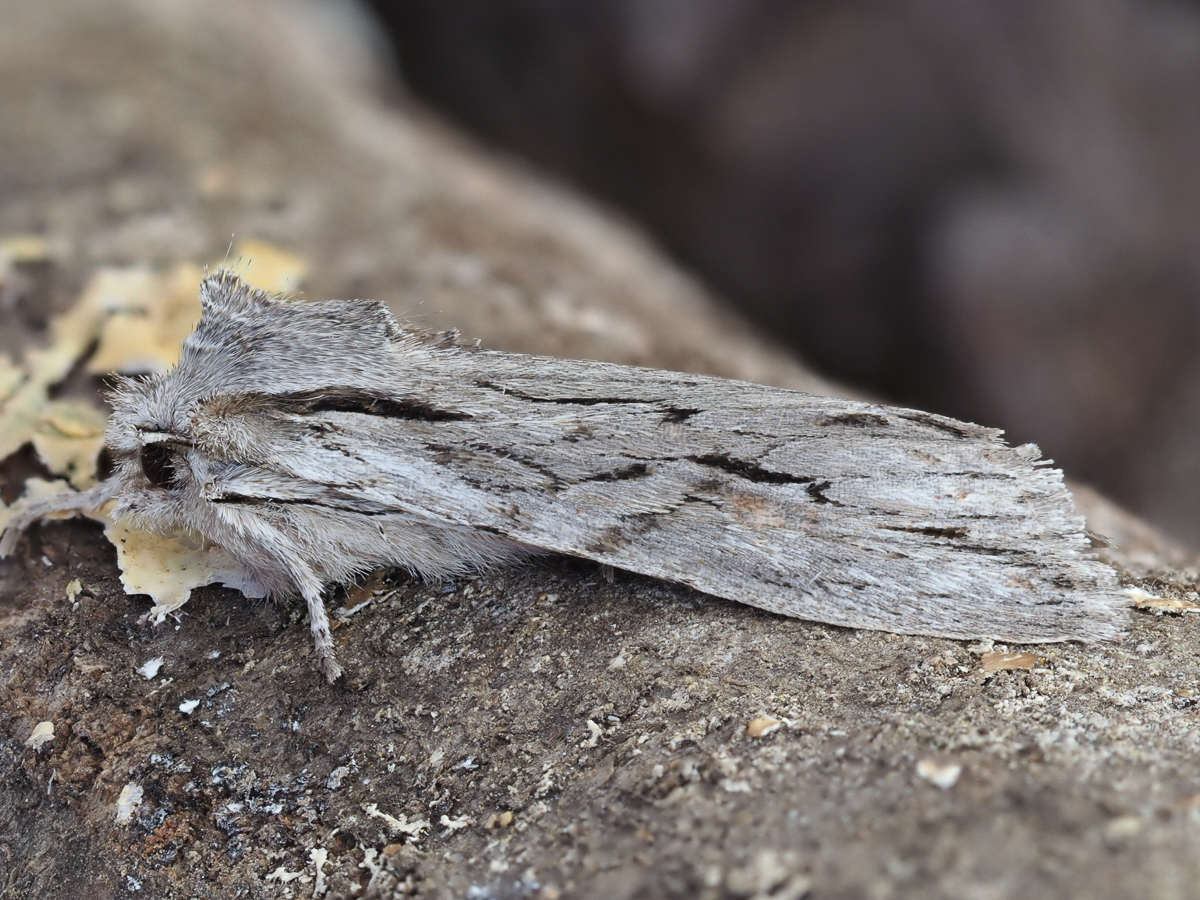
Photo © Andy Mitchell
Lithophane leautieri, the Blair's shoulder-knot, is a moth of the family Noctuidae. It is found in Europe. It originated from the area surrounding the Mediterranean Sea, but gradually moved north.
The wingspan is 39–44 mm. Forewing pale grey, dusted with olive grey; lines strongly dentate, but much obscured, marked by short oblique costal streaks; upper stigmata ill-defined, but united at their base by a long black line; the reniform with fulvous in lower half; claviform elongate, black-edged, united by a short black streak with outer line; a well-marked black streak from base on submedian fold; submarginal line indicated only by black dentate marks preceding it, of which the two on the folds are longest; fringe mottled dark and light grey; hindwing pale brownish grey, darker towards termen; ab. sabinae Geyer is rather smaller, blue-grey, more distinctly marked, especially the median shade and submarginal teeth; reniform stigma with hardly any fulvous in it; the two black lines on submedian fold hardly visible.
The moth flies from September to mid-November.
The larva is dark green, dorsal and subdorsal lines white, segmentally swollen and partially interrupted; spiracular line yellowish white. The larvae feed on various cypress species.
Source: Wikipedia
The primary larval foodplants are Common Juniper (Juniperus communis), Lawson's Cypress (Cupressus lawsoniana), Leyland Cypress (Cupressus x leylandii) and Monterey Cypress (Cupressus macrocarpa).